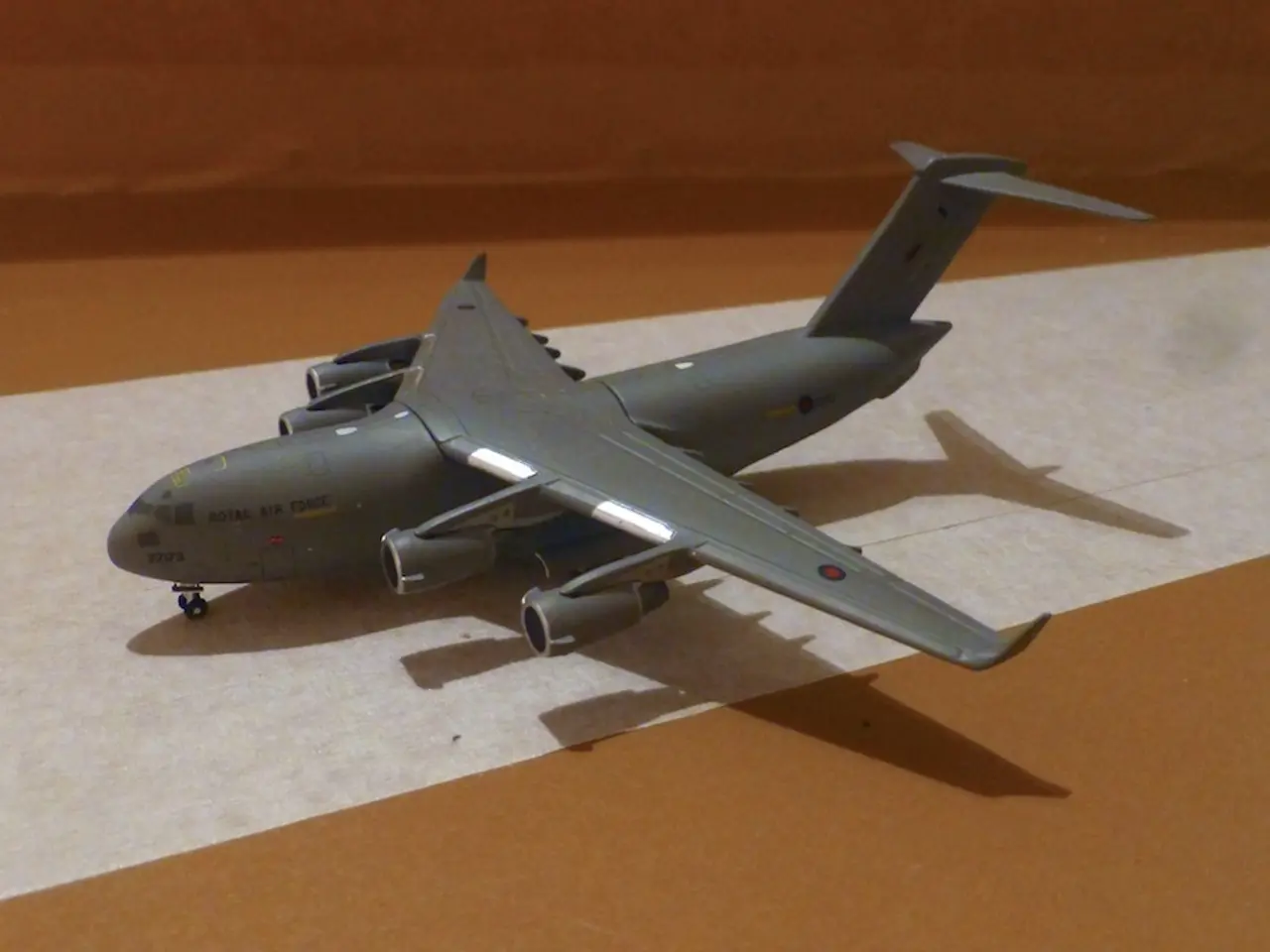Advances in Drone Propulsion Systems
The world of drone propulsion is experiencing a significant transformation, with numerous advancements shaping the future of aerial technology. From Electric Ducted Fans (EDFs) to AI-driven thrust optimization, these innovations are pushing the boundaries of drone performance, efficiency, and versatility.
Electric Ducted Fans (EDFs)
Improvements in electric motor efficiency and battery technology, particularly lithium-ion, solid-state, and lithium-sulfur batteries, are driving the popularity of EDFs. Battery-powered UAVs with EDF propulsion, such as commercial drones, now achieve over 40 minutes of flight time, making them suitable for security and industrial applications [1].
Tilt-Rotor and Tilt-Wing Systems
These systems combine vertical takeoff and landing (VTOL) capabilities with efficient forward flight, widely adopted in UAVs designed for versatility in missions such as long-range mapping and inspections. Their popularity grows as they enable drones to cover large areas with efficient fixed-wing-like flight while still benefiting from rotary-wing maneuverability and VTOL flexibility [4].
Coaxial Rotor Systems
Coaxial rotors improve lift and compactness by counter-rotating two rotors on the same axis, reducing torque and increasing stability. These systems support better payload handling and endurance, often used in medium-weight drones (150-600 kg class), which are seeing strong market growth due to versatility in military and commercial applications [2][3].
Hybrid-Electric Propulsion
Hybrid systems combining electric motors with small internal combustion engines address the endurance and payload limitations of all-electric drones. These systems leverage the quiet, efficient, and precise control of electrics while the combustion engine supplies power for longer flights and heavier loads without frequent recharging. The hybrid segment is the fastest growing in the UAV propulsion market, enhancing operational flexibility across commercial and military use cases [3].
Turbine Microjets
Smaller jet turbines provide high-thrust, high-speed capabilities to some UAVs, particularly the larger ones requiring rapid transit or specific performance attributes. These turbines complement electric and hybrid systems by enabling payloads and mission profiles that demand performance over extended ranges or speeds, although their adoption is less widespread due to higher fuel consumption and maintenance [2].
Plasma and Ion Propulsion
Plasma and ion propulsion remain mostly experimental in UAVs but are trending as potential silent, vibration-free propulsion solutions. These technologies offer the prospect of ultra-efficient, low-heat, and low-noise operation, which could revolutionize UAV stealth and endurance. However, current limitations in power density and complexity constrain immediate commercial deployment.
AI-Driven Thrust Optimization
Artificial intelligence is increasingly employed to optimize thrust allocation and propulsion system efficiency dynamically. AI algorithms manage battery usage, balance power between engines or rotors, and adjust thrust based on flight conditions, improving endurance, reducing energy consumption, and enabling advanced autonomous flight capabilities [4].
The integration of these advanced propulsion technologies is driving the proliferation of multi-role drones capable of longer flights, heavier payloads, and complex missions such as industrial inspection, agriculture, delivery, and military tasks. Improved battery and propulsion efficiency extends flight duration, reducing operational costs and enabling applications requiring persistent surveillance or coverage of large, remote areas [1][5].
Hybrid and tilt-rotor/wings systems expand drone versatility by merging vertical launch capability with long-range efficiency, responding to growing demands for logistics, infrastructure inspection, and environmental monitoring. AI-driven propulsion management enhances autonomy and reliability, essential for Beyond Visual Line of Sight (BVLOS) operations gaining regulatory momentum [4].
Overall, these technological advances in drone propulsion systems are rapidly expanding UAV operational capabilities, catalyzing market growth predicted to reach over $11 billion by 2030, with significant innovations in battery tech, hybrid systems, and AI integration firmly positioning drones for widespread industrial and military deployment [2][3].
IPET (Intelligent Propulsion for Electric Technology) is redefining drone performance through a fully integrated powertrain approach. Researchers are actively working to scale ion propulsion systems for practical aerial use, but commercial applications remain several years away. The development of emerging thrust technologies is redefining what drones can do and where they can go, expanding the operational envelope for both commercial and defense applications.
- The integration of AI-driven thrust optimization in drones is not only improving endurance and reducing energy consumption, but also enabling advanced autonomous flight capabilities.
- With the growing popularity of Tilt-Rotor and Tilt-Wing Systems, drones are able to combine vertical takeoff and landing capabilities with efficient forward flight, making them suitable for a wide range of missions requiring versatility.




